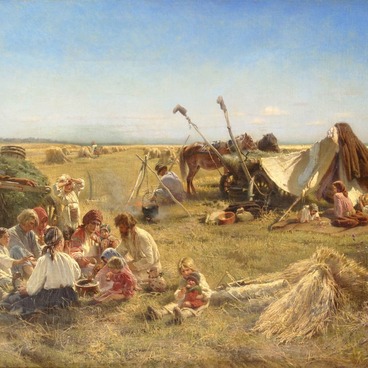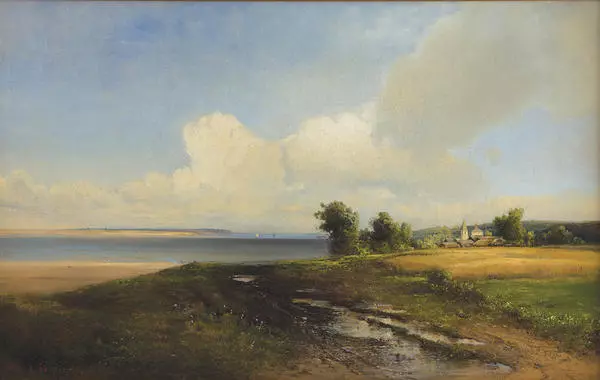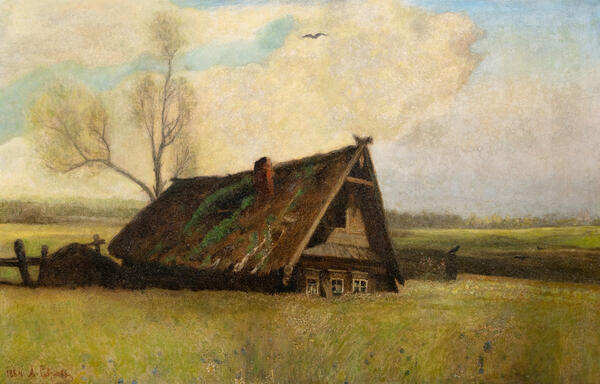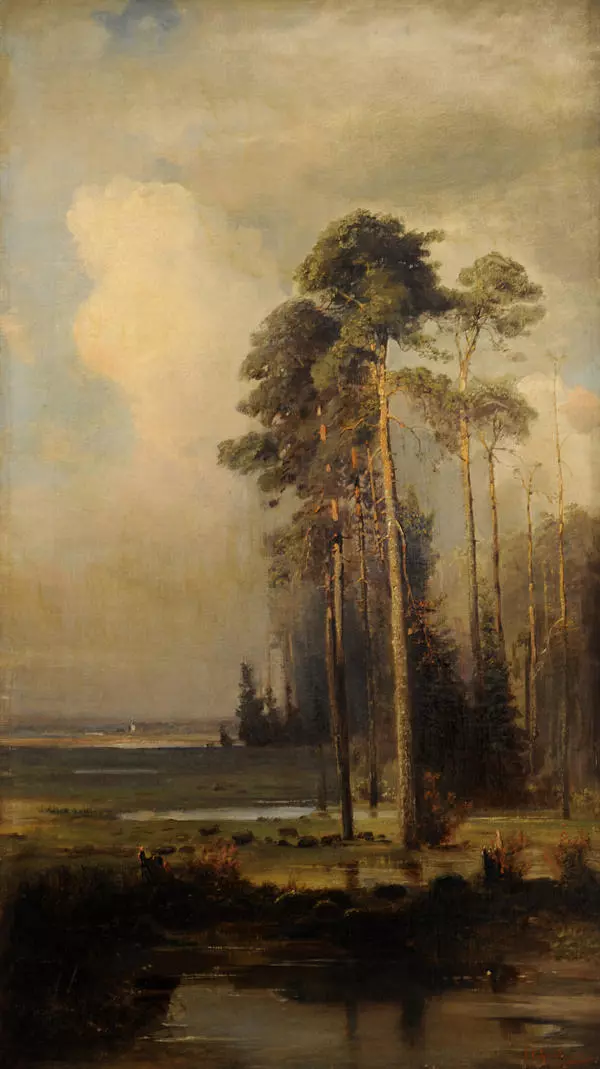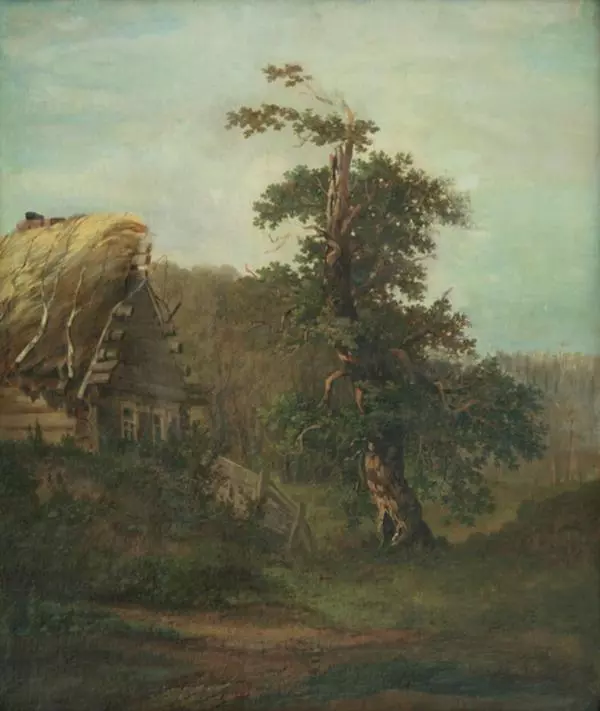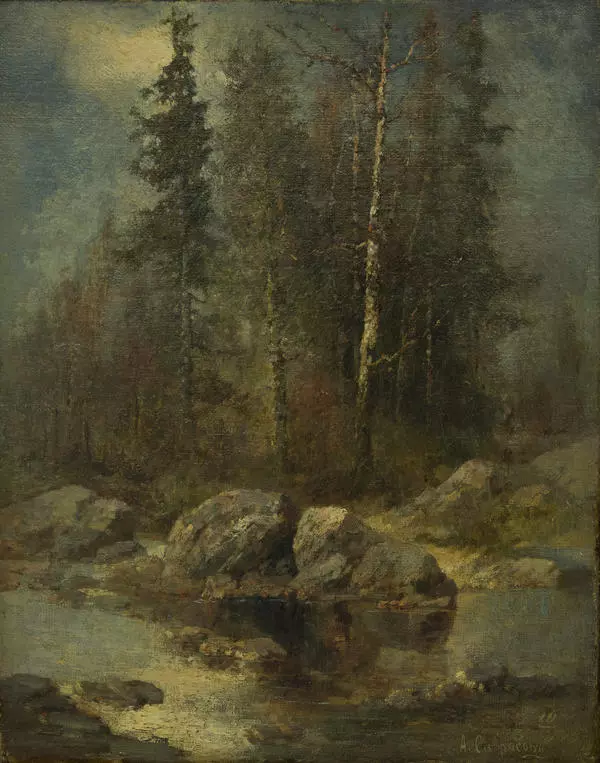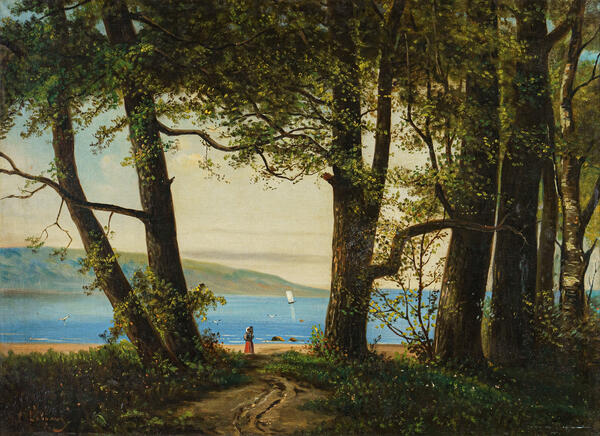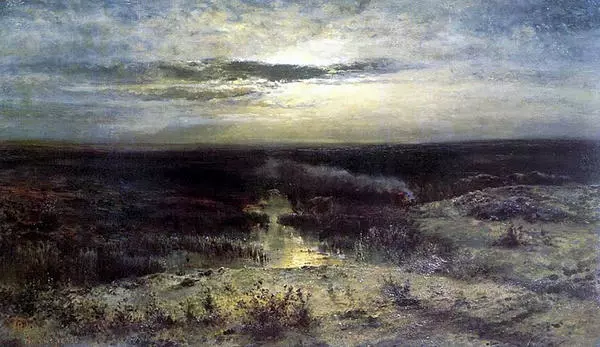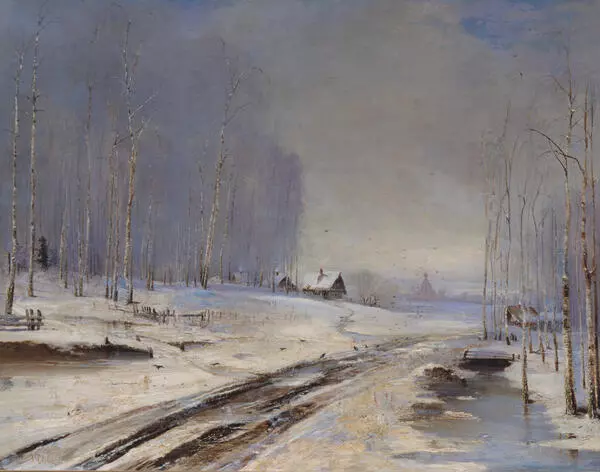In his work, Alexei Savrasov (May 24, 1830 - October 8, 1897) glorified the beauty of Russian nature in all its quiet charm: picturesque fields, forests and woods, poor villages and the endless sky above them. The traditions of romanticism and realism are organically intertwined within his original lyrical landscapes. Alexei Savrasov created ‘The Sunset’ at the peak of his creative heyday. By 1870, the artist was famous not only as a master of poetic landscape, but also as an excellent teacher. He taught at the Moscow School of Painting, Sculpture and Architecture. One of his most devoted students of that time was young Isaac Levitan, whom Savrasov repeatedly instructed: ‘Always catch spring, do not miss the sunrises and early mornings. Nature is never more varied and rich. Depict it so that the larks are not visible in the painting, but the singing of the larks can be heard. "
In 1870, the artist went with his family to Yaroslavl, where he worked very intensely and productively. There he soon suffered a bitter misfortune, the death of his newborn daughter – it was a hard loss. The mood of his works also changed, although the lyrical notes were preserved. The artist who loved above all the theme of nature’s awakening – in the morning or in the spring – turned to the theme of sunset, a theme of humble extinction, the departure of the sun, which, alas, cannot be stopped.
The quiet landscape is filled with a subtle play of light and color, emphasizing the sad mood of a small canvas, subtly transmitting the finest details. The canvas’s modest size does not affect the perception of space within the painting depicting the impressive infinity of Russian expanses and the clear boundless sky above it.
In 1871, the Association of Traveling Art Exhibitions was established thanks to Savrasov’s proactive participation. At the very opening of the Association, the artist presented to the impressed public his famous work “The Rooks Have Come Back”. Many famous artists later studied with Alexei Savrasov. Among them were Mikhail Nesterov, Konstantin Korovin, and Lev Kamenev, who all remembered their teacher with warmth and gratitude.
In 1870, the artist went with his family to Yaroslavl, where he worked very intensely and productively. There he soon suffered a bitter misfortune, the death of his newborn daughter – it was a hard loss. The mood of his works also changed, although the lyrical notes were preserved. The artist who loved above all the theme of nature’s awakening – in the morning or in the spring – turned to the theme of sunset, a theme of humble extinction, the departure of the sun, which, alas, cannot be stopped.
The quiet landscape is filled with a subtle play of light and color, emphasizing the sad mood of a small canvas, subtly transmitting the finest details. The canvas’s modest size does not affect the perception of space within the painting depicting the impressive infinity of Russian expanses and the clear boundless sky above it.
In 1871, the Association of Traveling Art Exhibitions was established thanks to Savrasov’s proactive participation. At the very opening of the Association, the artist presented to the impressed public his famous work “The Rooks Have Come Back”. Many famous artists later studied with Alexei Savrasov. Among them were Mikhail Nesterov, Konstantin Korovin, and Lev Kamenev, who all remembered their teacher with warmth and gratitude.



